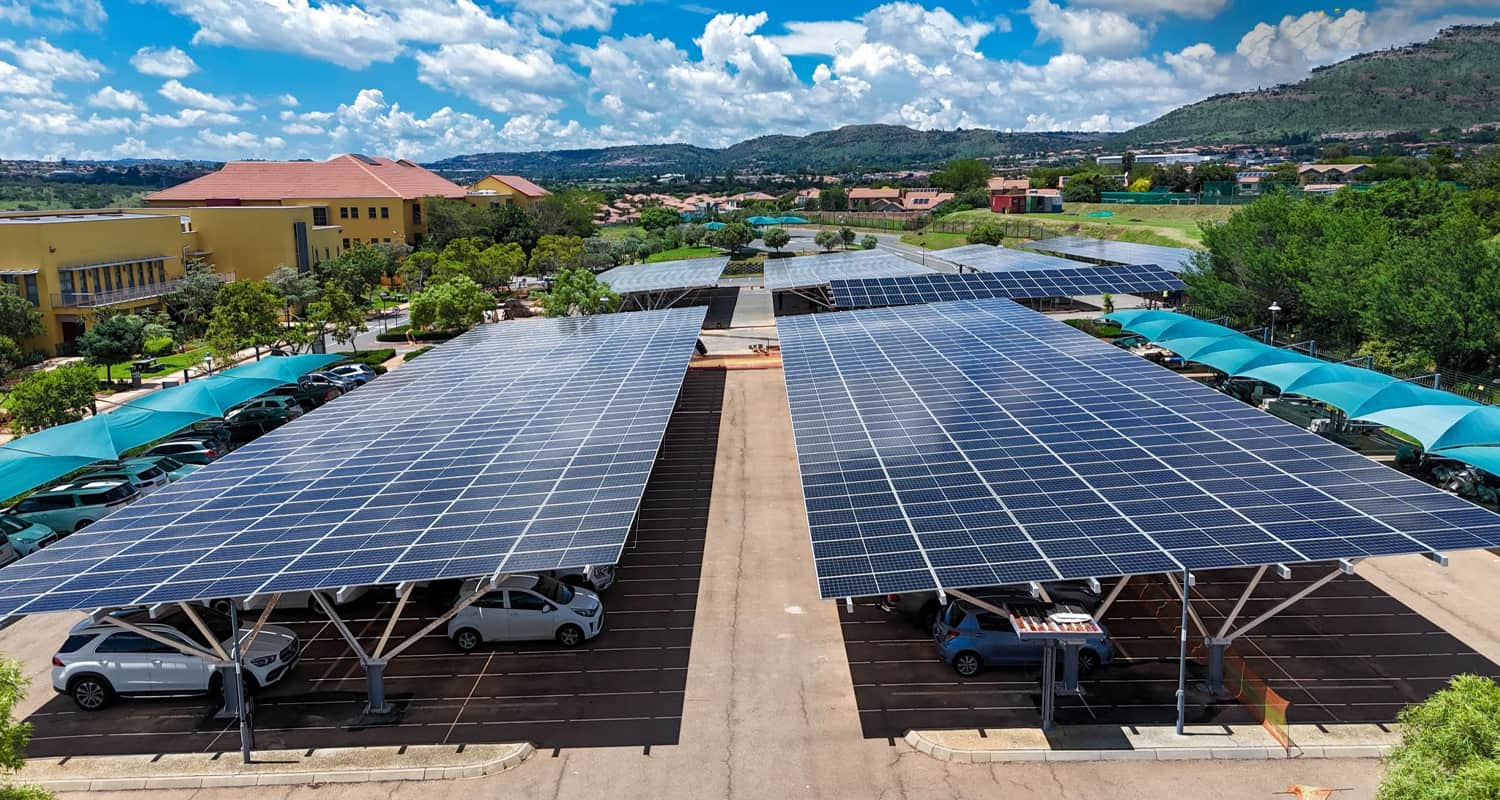
1. ¿Qué es una microrred?
Una microrred se refiere a un pequeño sistema de energía que consta de fuentes de energía distribuidas, cargas, almacenamiento de energía, transformación y distribución de energía y un sistema de control.
A pesar de su pequeño tamaño, una microrred posee todas las capacidades necesarias. Es un sistema eléctrico autónomo capaz de autocontrolarse, protegerse y gestionarse. Posee funciones completas de generación, distribución y consumo de energía, optimizando eficazmente la energía dentro de la red.
2. ¿Cuál es la diferencia entre una microrred y una gran red eléctrica?
Una microrred no es una "gran red eléctrica en miniatura". Es, más bien, un concepto relacionado con la gran red eléctrica tradicional. Las grandes redes eléctricas tradicionales se basan principalmente en una comunicación unidireccional, donde la electricidad fluye desde las centrales eléctricas hasta los consumidores capa por capa a través de líneas de transmisión. Las microrredes, en cambio, utilizan un modelo de comunicación bidireccional, lo que permite la generación y el equilibrio de energía local, maximizando así la eficiencia energética.
Las microrredes difieren significativamente de las grandes redes eléctricas tradicionales en sus funciones, estructura y funcionamiento:
■ Las microrredes dependen principalmente de fuentes de energía distribuidas, utilizando
sistemas de almacenamiento de energía
y dispositivos de control para regulación para satisfacer la demanda de carga.
■ Las microrredes permiten el funcionamiento independiente de la red. En caso de fallo de la red principal, pueden desconectarse rápidamente de ella y seguir suministrando energía a las cargas críticas de forma independiente.
■ La planificación y el diseño de microrredes determinan principalmente el plan de construcción del sistema óptimo en función del consumo energético integral, la distribución de recursos y las condiciones de la red existente, satisfaciendo así los requisitos de energía económicos, confiables y respetuosos con el medio ambiente.
Por lo tanto, las microrredes ofrecen nuevas soluciones desde las perspectivas de conservación de energía, protección del medio ambiente y reducción de costes y mejora de la eficiencia.
3. ¿Por qué construir microrredes cuando la tecnología tradicional de construcción de redes principales está muy madura?
La construcción de microrredes puede absorber eficazmente nueva energía y abordar los desafíos clave asociados con el funcionamiento conectado a la red de diversas fuentes de energía distribuidas.
Energía renovable
Las fuentes de energía como la solar y la eólica son altamente intermitentes y aleatorias, y se ven significativamente afectadas por el medio ambiente. La inestabilidad de voltaje y frecuencia es común, lo que puede afectar gravemente a la red eléctrica principal. Las investigaciones existentes demuestran que la integración de fuentes de energía distribuidas en la red mediante microrredes y el apoyo a la red eléctrica principal es una forma eficaz de maximizar la eficiencia de las fuentes de energía distribuidas. Las microrredes y las grandes redes eléctricas se complementan entre sí y pueden desempeñar un papel más importante, especialmente en zonas no cubiertas por grandes redes eléctricas, para compensar las deficiencias de estas últimas.
4. ¿Cuáles son las funciones de las microrredes?
El consumo local mejora la eficiencia energética. Las microrredes utilizan fuentes de energía distribuidas como el gas natural, la energía fotovoltaica y la eólica. Suelen tener menor capacidad, fuentes de energía dispersas y estar ubicadas cerca de la carga. Esto permite el consumo local y el equilibrio de los recursos energéticos distribuidos. Además, pueden intercambiar energía con la red principal, brindándose apoyo mutuo.
■ La conexión única reduce el impacto en la red principal. El intercambio de energía entre la microrred y la red se produce a través de un punto de conexión común, eliminando así la necesidad de una conexión directa entre múltiples fuentes de energía distribuidas. Las microrredes suministran energía principalmente dentro de una región, con transmisión externa nula o mínima, lo que resulta en un impacto mínimo en la red.
■ Mejorar la fiabilidad del suministro eléctrico y satisfacer las necesidades energéticas. Las microrredes utilizan métodos de control avanzados y numerosos dispositivos electrónicos de potencia para conectar fuentes de energía distribuidas, dispositivos de almacenamiento de energía y cargas controlables, convirtiéndolas en una carga controlable dentro del sistema de red. Pueden operar tanto en modo conectado a la red como de forma independiente, manteniendo eficazmente la operación segura y estable tanto de la microrred como de la red principal.
5. ¿Cuáles son los diferentes tipos de microrredes?
Clasificación macroeconómica: Las microrredes se clasifican en dos tipos: independientes y conectadas a la red.
① Las microrredes autónomas se construyen y operan de forma independiente, sin conexión a la red eléctrica externa. Garantizan el equilibrio entre la generación y el suministro de energía dentro de la microrred, garantizando así la estabilidad del suministro eléctrico conectado a la red.
② Las microrredes conectadas a la red funcionan en conjunto con la red externa. Cuando esta falla, deben desconectarse de la red para controlar los sistemas de suministro eléctrico y almacenamiento de energía dentro de la red, garantizando así el suministro eléctrico normal a las cargas críticas.
Clasificación microeconómica: Las microrredes se dividen en los siguientes cinco tipos:
① Microrred de CC: Las fuentes de energía distribuida, los dispositivos de almacenamiento de energía y las cargas se conectan al bus de CC. La red de CC se conecta a la red de CA externa mediante inversores electrónicos de potencia. Mediante convertidores electrónicos de potencia, las microrredes de CC pueden suministrar energía a cargas de CA y CC con diferentes niveles de tensión. Los dispositivos de almacenamiento de energía pueden regular las fluctuaciones en las fuentes de energía distribuidas y las cargas del lado de CC.
② Microrred de CA: Las fuentes de energía distribuida, los dispositivos de almacenamiento de energía y las cargas se conectan al bus de CA mediante dispositivos electrónicos de potencia. Actualmente, las microrredes de CA siguen siendo el tipo predominante de microrred. Mediante el control de interruptores en el PCC, las microrredes pueden cambiar entre los modos conectado a la red y en isla.
③ Microrredes híbridas CA/CC: contienen barras colectoras de CA y CC, lo que les permite suministrar directamente cargas de CA y CC.
④ Microrredes de ramales de distribución de media tensión: Integran eficazmente las fuentes de energía distribuidas y las cargas basadas en ramales de distribución de media tensión. Son idóneas para abastecer zonas de usuarios de media capacidad, alta confiabilidad y concentración.
⑤ Microrredes de baja tensión: Integran fuentes de energía distribuidas y cargas a baja tensión. Estas microrredes suelen ser propiedad de usuarios de electricidad o energía y son relativamente pequeñas.
6. ¿En qué escenarios se pueden utilizar las microrredes?
Actualmente, las microrredes están principalmente conectadas a la red y tienen diversas expresiones. Cada expresión corresponde a un escenario operativo, como "integración de fuente, red, carga y almacenamiento", "almacenamiento y carga fotovoltaica (descarga/inspección)", "almacenamiento y datos fotovoltaicos", "parque industrial cero emisiones", etc.; pero, independientemente de cómo cambien, todas dependen de un parque/comunidad/complejo/gasolinera/estación de carga/centro de datos relativamente cerrado. En combinación con el nivel de carga eléctrica del escenario, las nuevas condiciones de desarrollo energético del entorno y las condiciones de la red eléctrica, se crea un sistema regional integral, estable y confiable.
sistema de gestión inteligente de energía
Está formado por nuevas instalaciones distribuidas de energía, nuevos sistemas de almacenamiento de energía, equipos electrónicos de potencia y otros dispositivos.








 Página de inicio
Página de inicio






